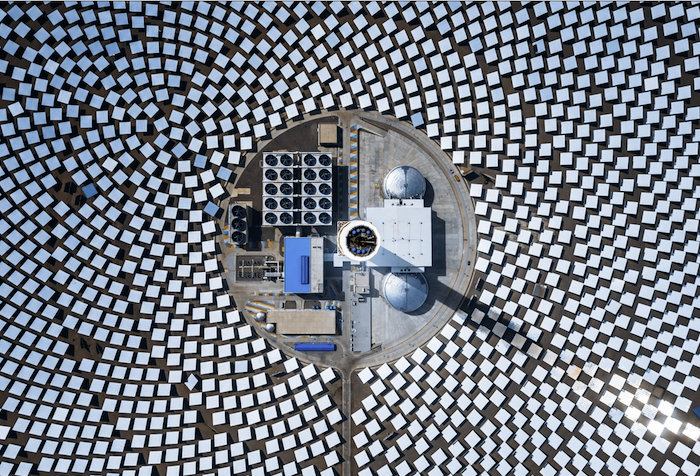The region requires a lot of reliable and affordable energy storage, from batteries and other sources, not just because it must push hard to hit its climate goals but also because it has a growing population and economy.
Storage will be particularly important in helping to decarbonise industrial sectors such as mining.
The Australian government expects that by 2025 the National Electricity Market (NEM) could at times run on 100% clean electricity, and hopes to reduce emissions 43% by 2030, achieving net zero by 2050.
Battery power will no doubt play a major part in meeting these goals—but batteries alone will not be enough.
Instead, a Renewable Energy Storage Roadmap published this year by Australia’s primary government research body, the Commonwealth Scientific and Industrial Research Organisation (CSIRO), identified a mix of technologies required to meet Australia’s energy needs.
CSIRO energy director Dietmar Tourbier, called the roadmap a major step towards pinpointing the right technologies for storing renewable generation, but acknowledged that much work is still to be done. “Government and industry have recognised energy storage as a priority,” he said.
“However, significant knowledge gaps remain, requiring further investigation to support informed action.”
One of the key technologies mentioned within the report is concentrated solar power (CSP), which uses mirrors called heliostats to concentrate sunlight onto central receivers, generating high temperatures that can be used to produce electricity.
CSP plants can be built in a range of sizes and are complementary to other renewable energy technologies, such as wind and photovoltaic (PV) solar.
And as a source renewable energy, CSP is uniquely positioned to deliver baseload capacity, since the heat generated by its heliostats can be stored in a low-cost thermal storage medium such as molten salt.
The cost-effectiveness of such media means they can be deployed at gigawatt-hour scales, close to the capacities that can only be achieved with pumped hydro.
At such volumes, CSP’s stored energy can be used throughout the night, helping ensure a stable and resilient grid at times when traditional solar cannot function. It can supply industrial heat as well as delivering long-duration energy storage across multiple end-use sectors.
This is fortunate for Australia, since the CSIRO roadmap states that the NEM alone could require a 10-to-14-fold increase in its electricity storage capacity between 2025 and 2050.
In the report, CSIRO chief executive Larry Marshall underlined the importance of being able to stabilise the power grid while building utility-scale storage capacity.
“There is no silver bullet for reaching net zero, so we need multiple shots on goal like renewables, batteries, hydrogen, thermal storage, pumped hydro, sustainable aviation fuels and a host of new science-driven technologies,” he said.
The energy storage arena is not short of technology options. Technologies ranging from gravitational energy storage using concrete blocks to adiabatic compressed air stores are currently being commercialised, but most contenders are not yet mature enough to scale.
CSP, on the other hand, is a mature technology. China, for example, is already fast-tracking its use of CSP and announced at the end of last year that it has 30 new plants in development.
In its Integrated System Plan, which came out at the end of last year, the Australian Energy Market Operator (AEMO) identified storage of four to 12 hours’ duration as “the most pressing utility-scale need in the next decade.”
This is precisely the sweet spot for CSP, whereas lithium-ion batteries struggle to remain cost effective with discharge times beyond four hours.
AEMO said that the longer-duration storage is required “to manage stronger daily variations in solar and wind output, and to meet consumer demand, also during more extreme days, as coal capacity declines.”
The only other technology that is scalable, mature and can store renewable energy cost effectively with discharge times above four hours is pumped hydro.
Australia is currently looking at around 15 to 20 proposals for pumped hydro projects, but compared to CSP the technology is challenging to implement.
It can only be built in situations where there is space for two water reservoirs at different heights and so is unsuitable for the flat open spaces that dominate most of Australia. The large scale of pumped hydro projects also makes them difficult to finance using private sector funding.
CSP, on the other hand, can be built at a smaller scale—enough to power a single community or mining complex, for example—and is much more suited to Australia’s dry open land.
CSIRO’s findings have naturally been given the seal of approval by the Australia’s CSP trade body, the Australian Solar Thermal Energy Association (AUSTELA).
AUSTELA spokesperson Keith Lovegrove said: “The roadmap highlights the role of CSP across multiple energy use sectors in the Australian economy, including power generation, transport and manufacturing.”
Combined with PV, CSP could also play a potentially important role in creating renewable hydrogen that can be converted to ammonia for export. As Australia waves goodbye to coal-fired generators, CSP looks set to scale at just the right time.
The Australian Renewable Energy Agency (ARENA) has approved AUD$65 million in funding for a 3

Site of the 700 MW DEWA Noor CSP project on the planned 5 GW solar energy park by 2030
0 MW CSP plant in Port Augusta, South Australia. This 288 MWh project is said to be the country’s first commercial CSP plant and will begin operations towards the end of 2025.

A growing need to store excess renewable energy is driving Australia to look at a range of storage plants and technologies.
It will use Australian technology, which remains relatively untested—most CSP plants in the world today have been built using Chinese or Spanish know-how.
ARENA CEO Darren Miller said: “With the increasing need for dispatchable renewable generation and longer-duration energy storage, CSP has potential to assist Australia’s energy transition alongside pumped hydro and large-scale batteries.”
At Pacific Green, we too are excited to see how Concentrated Solar Power technology scales across Australia and lives up to its promise. Along with battery technology, now could be the time for investors to factor CSP technology into their long-term strategies.